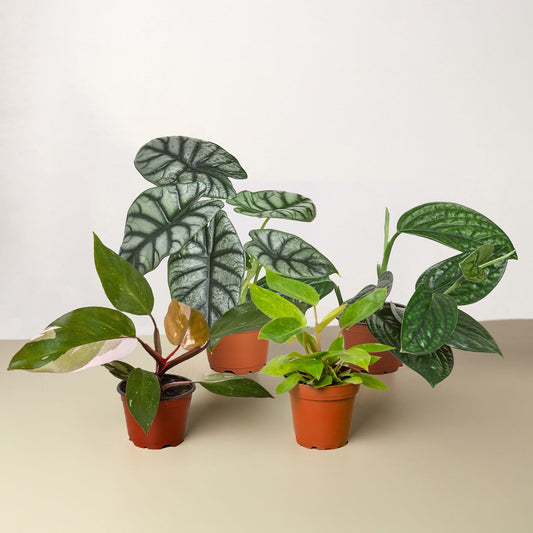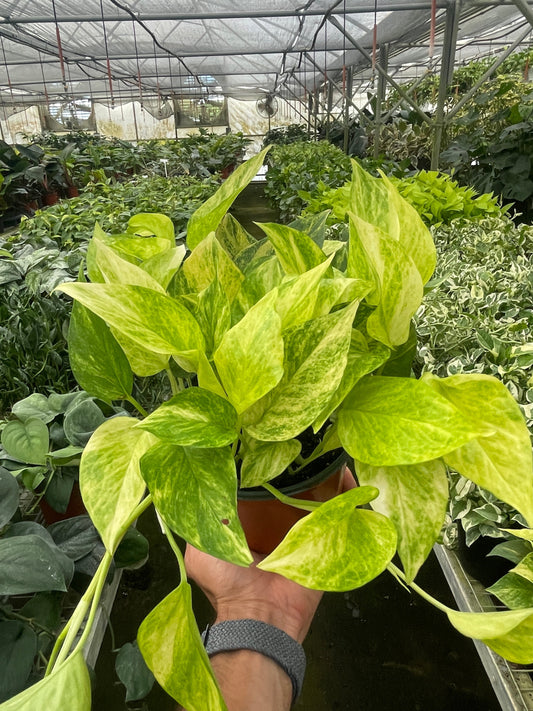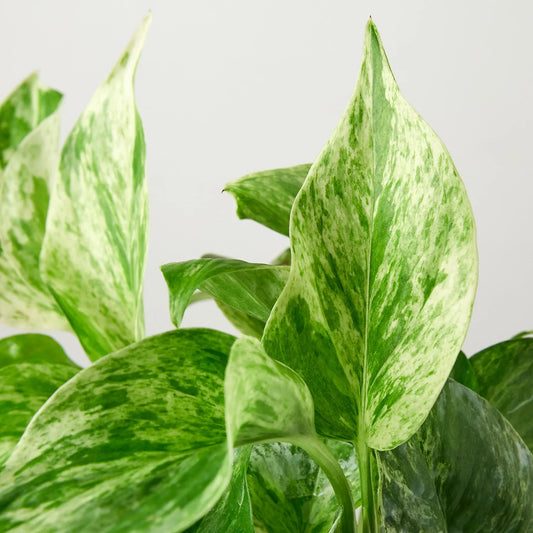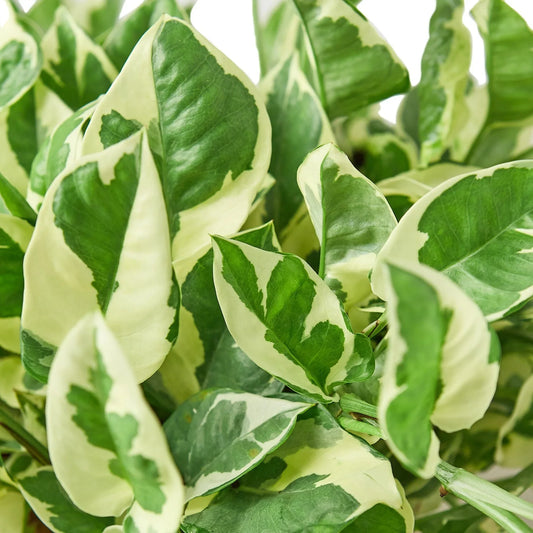What's the Best Fertilizer For Coral Aloes?
Cafe Planta Team
Coral aloes, with their striking rosettes and unique colors, are a favorite among plant lovers. Whether you're an experienced plant parent or just starting out, knowing how to properly fertilize your coral aloe can make all the difference in its growth and vibrancy.
In this article, we'll explore the best fertilizers for coral aloes, how often to fertilize them, and some practical tips to help you keep your plant thriving. Grab a cup of coffee, get comfortable, and let's get into it!
Understanding Coral Aloes
Before we dive into fertilizers, it's important to understand what makes coral aloes special. Unlike many other aloes, coral aloes are not just about those fleshy, spiky leaves. They're known for their vibrant colors that range from deep greens to stunning pinks and reds, depending on the light and temperature. This unique feature makes them a standout choice for indoor and outdoor gardens alike.
These succulents are native to South Africa and thrive in arid conditions. They prefer well-draining soil and lots of sunlight, which helps them maintain their vivid hues. If you're growing coral aloes indoors, placing them near a south-facing window is ideal. But remember, they're not fans of overwatering, so a little neglect can actually be beneficial!
Now, let's talk about why fertilizers are important. While coral aloes are pretty low-maintenance, giving them a nutrient boost can help them grow faster and produce more vibrant leaves. The right fertilizer can supply essential nutrients that might not be present in your soil, ensuring your plant remains healthy and beautiful.
Choosing the Right Fertilizer
When it comes to fertilizers, not all are created equal. For coral aloes, you'll want to look for a fertilizer specifically designed for succulents and cacti. These are typically low in nitrogen, which prevents the plant from becoming too leggy, and higher in phosphorus and potassium, which support healthy root and leaf development.
Here are some options you might consider:
- Liquid fertilizers: These are easy to use and can be mixed with water for application during regular watering. They're perfect for giving your coral aloe a quick nutrient boost.
- Granular fertilizers: These are sprinkled on the soil surface and watered in. They release nutrients slowly, providing a steady supply over time.
- Organic fertilizers: If you prefer a more natural approach, look for organic options that are derived from plant or animal matter. These can improve soil health as well as provide nutrients.
Whichever type you choose, make sure it's labeled for succulents and cacti to avoid over-fertilization. Too much nitrogen can lead to rapid but weak growth, which isn't ideal for these sturdy plants.
When to Fertilize
Timing your fertilization is just as important as choosing the right product. Coral aloes, like many succulents, have specific growing seasons. They typically grow actively during the warmer months, from spring to early fall. This is the best time to fertilize, as the plant will use the extra nutrients to fuel its growth.
You can follow a schedule like this:
- Spring: Start fertilizing as new growth begins. A monthly application during this season can work wonders.
- Summer: Continue monthly fertilization to support peak growth.
- Fall: As growth begins to slow, reduce fertilization to every other month.
- Winter: Hold off on fertilizing. Coral aloes enter a rest period during colder months and don't require extra nutrients.
Remember, these are just guidelines. If you notice your aloe growing more vigorously or slower than usual, you might need to adjust your schedule accordingly.
Signs of Over-Fertilization
It can be tempting to think more fertilizer equals a healthier plant, but that's not always the case. Over-fertilizing can lead to a condition known as fertilizer burn, where the plant's roots get damaged by excess nutrients.
Watch out for these signs:
- Leaf discoloration: Yellowing or browning of the leaf edges can indicate too much fertilizer.
- Stunted growth: If your plant isn't growing as expected, it might be a sign of nutrient overload.
- Root damage: In severe cases, fertilizer burn can harm the roots, making it difficult for the plant to take up water and nutrients.
If you suspect over-fertilization, flush the soil with water to remove excess nutrients, and hold off on adding more fertilizer for a while. Your aloe will thank you for it!
DIY Fertilizers
If you're a fan of DIY projects, why not try making your own fertilizer? It's a fun and cost-effective way to provide your coral aloe with the nutrients it needs. Here's a simple recipe you can try:
- Banana peel tea: Chop up banana peels and steep them in water for a few days. The resulting "tea" is rich in potassium, which supports strong root development.
- Eggshell powder: Crush eggshells into a fine powder and sprinkle it on the soil. This adds calcium, which can help strengthen your plant's structure.
- Compost: If you have a compost pile, this can be a great source of nutrients. Just make sure it's well-aged before applying.
While DIY fertilizers can be effective, it's important to apply them sparingly. Just like with store-bought options, too much of a good thing can be harmful.
Soil and Fertilizer Interaction
The soil you're using plays a huge role in how well your coral aloe absorbs nutrients. Ideally, your soil should be well-draining to prevent water from sitting around the roots. A cactus or succulent mix is usually a good fit, as it allows excess water to escape, reducing the chance of root rot.
When fertilizing, always water your plant beforehand. This helps prevent root burn by diluting the fertilizer and ensuring even distribution. Think of it like preparing your skin before applying lotion – the moisture helps the nutrients get absorbed more effectively.
Also, be mindful of the pH level. Coral aloes prefer slightly acidic to neutral soil (a pH of 6-7). If your soil is too alkaline or acidic, it can affect nutrient uptake. You can test your soil's pH with a simple home test kit, available at most garden centers.
Common Mistakes to Avoid
Even seasoned plant parents can make mistakes with fertilization. Here are some pitfalls to watch out for:
- Using the wrong fertilizer: Make sure it's suitable for succulents to avoid nutrient imbalances.
- Over-fertilizing: Follow the recommended dosage and frequency to prevent damage.
- Ignoring the soil: Fertilizer won't work well in poor soil. Ensure it's well-draining and has the right pH.
It's all about balance. Too much fertilizer can be just as harmful as too little, so take the time to understand your plant's needs and adjust accordingly.
Encouraging Healthy Growth
Fertilization is just one piece of the puzzle in keeping your coral aloe healthy. Here are some other tips to promote growth:
- Light: Ensure your plant gets plenty of bright, indirect sunlight. Direct sun can scorch the leaves, while too little light can lead to weak growth.
- Watering: Allow the soil to dry out completely between waterings to prevent root rot. A good rule of thumb is to water when the top inch of soil feels dry.
- Pruning: Remove dead or damaged leaves to encourage new growth. This also helps your plant look its best.
By combining these care tips with the right fertilization, your coral aloe should thrive and become a beautiful addition to your home or garden.
Final Thoughts
Fertilizing coral aloes doesn't have to be complicated. With the right products and timing, you can help your plant flourish and maintain its stunning colors. Remember, it's all about balance and understanding your plant's needs.
At Cafe Planta, we believe in the power of plants to bring joy and connection to our lives. Whether you're looking for the perfect plant or need advice on care, we're here to help. Feel free to reach out via email or Instagram. We look forward to helping you grow your plant family!



















